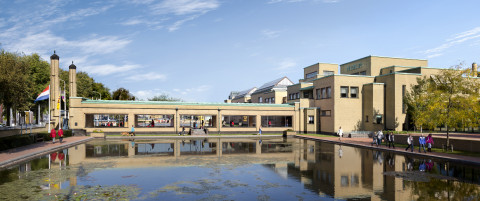
Plan your visit
Visit the Kunstmuseum The Hague. See our openinghours, entrance fees and read about other practical info.
Kunstmuseum Den Haag has a treasure chamber of over 160.000 pieces of art. Here we work on making the highlights from this collection available online.
Less than five centimetres in diameter, yet quite unique: a lidded jar made of imperial Chinese glass. This world heritage in miniature, which is frequently used in books and articles as an example of the earliest imperial Chinese glass, is one of the gems of Kunstmuseum Den Haag’s glass collection. It will be on display alongside other items of Chinese glass in a small exhibition entitled Chinese Glass – Imperial Treasure, which opens on the 20th of January.
Chinese glass is rare all over the word, as China does not have a culture of glass like in Europe, where glass has been used to make drinking vessels since the Roman period. Modern methods of glass production were introduced to China by French Jesuits in the late seventeenth century, as part of an exchange of techniques and materials. But unlike in Europe at that time, the Chinese did not attempt to produce colourless, transparent glass. They used it mainly to imitate other more valuable materials, like agate, quartz, garnet, jade, marble and porcelain.
The core of the lidded jar in Kunstmuseum Den Haag’s collection is made of opaque white glass, in imitation of porcelain. Its exquisite decoration of ‘falangcai’, or ‘foreign colours’, was applied within the walls of the Forbidden City in Beijing. The blue mark of Emperor Kangxi on the bottom is very special. It indicates that the jar was made shortly after European glassmaking techniques were introduced to China. Emperor Kangxi, who ruled from 1662 to 1722, established the imperial glass workshop in the Forbidden City in 1696. The decoration also reveals the unique status of the jar, as yellow is the colour of the emperor in China.
There are still a few thousand glass objects at The Palace Museum in the Forbidden City, but most of them date from after Kangxi, so Chinese art experts are always keen to come and see the jar in The Hague. One of them is glass expert Dr. Shelly Xue, who travels the world researching imperial Chinese glass outside China. Three years ago she visited Kunstmuseum Den Haag and was hugely impressed by our small yet extraordinary glass collection, particularly the lidded jar. So it is high time that we shared this unique object, and our collection of Chinese glass, with our visitors.